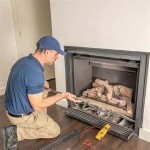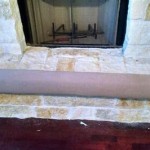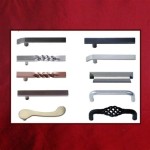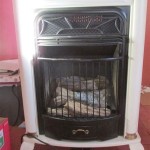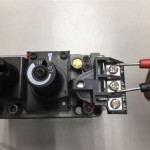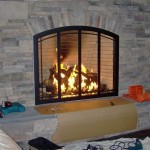Painting a Wooden Fireplace Mantel White: A Comprehensive Guide
A wooden fireplace mantel can serve as a stunning focal point within a home. However, a dated or mismatched wood finish can detract from the overall aesthetic. Painting a wooden fireplace mantel white is a popular and effective way to brighten a room, modernize its appearance, and create a clean, versatile backdrop for décor. This article provides a comprehensive guide to successfully painting a wooden fireplace mantel white, covering preparation, materials, application techniques, and considerations for achieving a professional-quality finish.
Preparing the Wooden Mantel for Painting
Proper preparation is critical for ensuring the paint adheres correctly and provides a smooth, durable finish. This stage involves cleaning, sanding, and priming the mantel, addressing any imperfections, and creating an ideal surface for the paint to bond to.
First, the mantel must be thoroughly cleaned. Begin by removing any decorations, accessories, or items resting on the mantel. Use a vacuum cleaner with a brush attachment to remove loose dust, cobwebs, and debris from all surfaces and crevices. Following vacuuming, wash the mantel with a mild detergent and warm water solution. This step removes any grease, grime, or residues that could hinder paint adhesion. Use a soft cloth or sponge to gently scrub the surface, paying particular attention to areas that may have accumulated dirt or soot. Rinse the mantel with clean water to remove any soap residue and allow it to dry completely before proceeding to the next step. For mantels with stubborn stains or residues, a specialized wood cleaner may be necessary, but always test the cleaner in an inconspicuous area first to ensure it does not damage the wood.
Next, sanding the mantel is crucial for creating a smooth and receptive surface for the paint. Use medium-grit sandpaper (around 120-grit) to sand the entire mantel, focusing on removing any existing varnish, paint, or imperfections. Sand in the direction of the wood grain to avoid scratching the surface. If the existing finish is particularly thick or uneven, start with a coarser grit sandpaper (around 80-grit) and gradually move to finer grits. After sanding with medium-grit sandpaper, switch to fine-grit sandpaper (around 220-grit) to further smooth the surface and remove any sanding marks. This step is essential for achieving a professional-looking finish. Thoroughly remove all sanding dust with a tack cloth or a damp cloth before proceeding.
Repairing any imperfections, such as dents, scratches, or cracks, is an important part of the preparation process. Use wood filler to fill any imperfections, applying it evenly and smoothing it out with a putty knife. Allow the wood filler to dry completely according to the manufacturer's instructions. Once dry, sand the filled areas smooth, blending them seamlessly with the surrounding wood. Feather the edges of the filled areas to ensure a smooth transition. Remove all sanding dust before proceeding to the next step.
Priming the mantel is the final step in the preparation process. Primer creates a uniform surface for the paint to adhere to, seals the wood, and helps to prevent tannins or other substances from bleeding through the paint. Choose a high-quality primer specifically designed for wood. Apply the primer in thin, even coats using a brush, roller, or spray gun. Allow the primer to dry completely according to the manufacturer's instructions. Once dry, lightly sand the primed surface with fine-grit sandpaper (around 320-grit) to further smooth the surface and remove any imperfections. Remove all sanding dust before proceeding to painting.
Selecting the Right Paint and Tools
Choosing the appropriate paint and tools is essential for achieving a durable and aesthetically pleasing finish. The type of paint, sheen, brushes, rollers, and other accessories will significantly impact the final result.
Selecting the right paint is a critical decision. For wooden fireplace mantels, acrylic latex paint is generally recommended due to its durability, ease of application, and low odor. Oil-based paints offer excellent durability but require more careful application and cleanup and may yellow over time. Water-based paints clean up easily with soap and water, making them more convenient. Consider the specific conditions in which the mantel will be used. If the fireplace is frequently used, a heat-resistant paint may be necessary. Choose a paint that is specifically designed for interior use and that is compatible with the primer used. Always read the manufacturer's instructions carefully before applying the paint.
The sheen of the paint refers to its level of glossiness. Different sheens offer different aesthetic qualities and levels of durability. Flat paint has a matte finish and is good at hiding imperfections, but it is not as durable or easy to clean. Eggshell paint has a slightly more sheen and is more durable and easier to clean than flat paint. Satin paint has a moderate sheen and is a good compromise between durability and aesthetics. Semi-gloss paint has a high sheen and is very durable and easy to clean, making it a good choice for areas that are frequently touched or exposed to moisture. Gloss paint has the highest sheen and is extremely durable and easy to clean, but it can highlight imperfections. For a fireplace mantel, a satin or semi-gloss sheen is generally recommended as it provides a good balance of durability, aesthetics, and ease of cleaning.
Choosing the right brushes and rollers is crucial for achieving a smooth and even paint application. Use high-quality brushes with synthetic bristles for applying acrylic latex paint. Natural bristle brushes are better suited for oil-based paints. Choose a brush size that is appropriate for the size and complexity of the mantel. For large, flat surfaces, use a wide brush. For intricate details and corners, use a smaller brush. Use a high-quality roller with a nap that is appropriate for the surface texture. A smooth roller nap is best for achieving a smooth finish on a mantel. Use a paint tray with a liner to hold the paint and to easily load the brush or roller. Clean the brushes and rollers thoroughly after each use to ensure they last longer.
In addition to paint, brushes, and rollers, several other tools and accessories are essential for painting a wooden fireplace mantel. Painter's tape is used to mask off areas that should not be painted, such as the surrounding wall or trim. Drop cloths are used to protect the floor and other surfaces from paint splatters. A putty knife is used to apply and smooth wood filler. Sandpaper is used to smooth the surface of the mantel before painting. A tack cloth or damp cloth is used to remove sanding dust. A paint can opener is used to open the paint cans. A stirring stick is used to mix the paint thoroughly. Gloves are used to protect the hands from paint. Safety glasses are used to protect the eyes from paint splatters.
Applying Paint to the Wooden Mantel
Proper paint application techniques are crucial for achieving a professional-looking finish. This involves applying thin, even coats, avoiding drips and runs, and allowing sufficient drying time between coats.
Before beginning to paint, protect the surrounding areas with painter's tape and drop cloths. Tape off any areas that should not be painted, such as the surrounding wall or trim. Place drop cloths on the floor and any other surfaces that need to be protected from paint splatters. Ensure that the painter's tape is firmly adhered to the surface to prevent paint from seeping underneath. Overlap the drop cloths to provide complete coverage.
Apply the paint in thin, even coats. Avoid applying too much paint at once, as this can lead to drips and runs. Use a brush or roller to apply the paint, working in the direction of the wood grain. Overlap each stroke slightly to ensure complete coverage. Apply even pressure to the brush or roller to avoid streaks or unevenness. Pay attention to the corners and crevices of the mantel, ensuring that they are thoroughly coated with paint.
Allow sufficient drying time between coats. Follow the manufacturer's instructions for drying time. Generally, it is recommended to allow at least 2-4 hours of drying time between coats. The drying time may vary depending on the type of paint, the temperature, and the humidity. Do not apply the second coat of paint until the first coat is completely dry to the touch. Applying the second coat of paint too soon can cause the first coat to wrinkle or bubble. Lightly sand the first coat of paint with fine-grit sandpaper before applying the second coat to create a smooth surface for the second coat to adhere to.
Apply a second coat of paint using the same techniques as the first coat. The second coat of paint will provide fuller coverage and a more even finish. If necessary, apply a third coat of paint to achieve the desired level of coverage and color saturation. After the final coat of paint has dried completely, carefully remove the painter's tape. Score the edge of the painter's tape with a utility knife before removing it to prevent the paint from chipping or peeling. Touch up any imperfections with a small brush.
Allow the paint to cure completely before placing any decorations or accessories on the mantel. Curing time can vary depending on the type of paint, but it is generally recommended to allow at least 24-48 hours for the paint to fully cure. During the curing process, avoid touching or scratching the painted surface. Clean the mantel regularly with a soft cloth and mild detergent to maintain its appearance. Avoid using harsh chemicals or abrasive cleaners, as these can damage the paint.

Painting Your Oak Mantel White Fireplace Wood Painted Mantels

How We Painted Our Oak Mantel Channel Updates

Painted My Outdated Oak Fireplace Surround White Spray The Yucky Gold Accents With High Heat Black Spra Surrounds

My Fireplace Mantel Reveal A Makeover With Paint Setting For Four Interiors

Painting Your Oak Mantel White Hometalk

Painted Oak Fireplace Mantel

Painting Your Oak Mantel White Hometalk

My Fireplace Mantel Reveal A Makeover With Paint Setting For Four Interiors

Tips For Painting A Fireplace Mantel Or Surround Paint Painted Mantels Wooden

How To Paint A Fireplace Interior Design Diy Tips Direct Fireplaces
Related Posts

